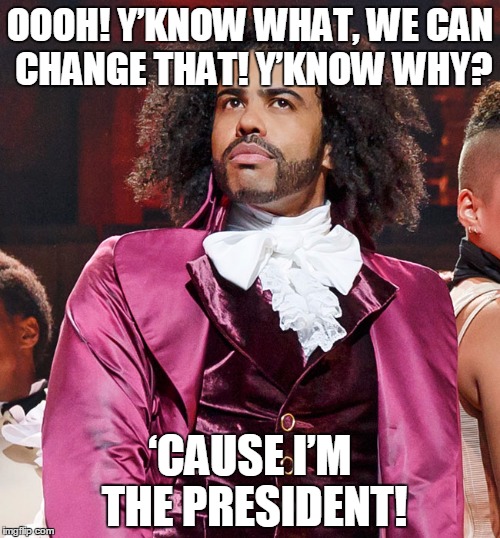I'm sorry, I just had to use that Hamilton line. It comes into my head whenever I think of The Election of 1800. Hamilton aside, this election was pretty interesting! Welcome back to Hysterical Histories, and today we're going to tackle what is, in my opinion, one of the coolest elections ever.Can we get back to politics? Please? Yo,
This election had a lot of firsts. It was the first election where both parties (at that time the Federalists and the Democratic-Republicans,) both ran candidates for office, and they actually had to work a little at it. One couldn't just say "Vote for Adams because he's better than you." This was also the first tie in the electoral college for the presidency. Normally there is always a rig to make it so that this doesn't happen, but the Republican who was chosen to throw his vote... didn't? And then we had a tie between two candidates: Thomas Jefferson and Aaron Burr.
So now I'm facing Aaron Burr, with his own faction...The vote then went to the House of Representatives, as was laid out in the Constitution. It took 36 ballots, and as we Hamilton fans know, an interjection from Hamilton, to finally have a clear winner. Thomas Jefferson was going to be President, and, to everyone's confusion, Burr would be Vice President.
Haha, yeah right. Do you hear this guy? Man openly campaigns against me, talkin' about "I look forward to our partnership."
So, one of the main things that changed in the Jefferson presidency was that rule that the runner-up becomes Vice President. But 1800 saw a lot of other interesting things occur. The first slave rebellion, though largely unsuccessful, was in 1800.
Another important occurence was the Marbury vs. Madison case. This was the case where the judiciary gave itself the power of judicial review. Basically, this means that the judiciary can uphold or invalidate federal laws as it sees fit. But the judiciary is really complicated, so we'll talk about it another time.
Thanks for reading! See you next week!

.png)

